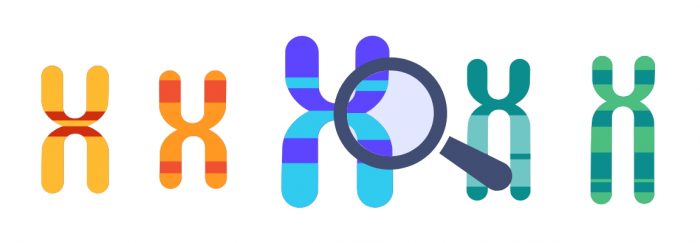Just like DNA, we also change.
Unlike DNA, our changes are aimed from the outset at being better and more efficient. We strive to avoid the trial-and-error processes that all living organisms must go through.
Thanks to this evolution, we present our new swabs: the RapiDri swabs from Isohelix.

In the end, swabs are swabs.
And all swabs used to collect buccal cells are used in the same way. If you’re already familiar with using previous swabs, you won’t have any issues with this new model.
Before use, it is necessary to wait at least an hour after eating, drinking, or brushing your teeth. Additionally, we recommend avoiding the process immediately after smoking, though, in general, we advise against smoking for health reasons.
To begin, open the package and take out the swab, holding it by the tube, making sure not to touch the collection tip. The goal is to collect buccal cells, not skin cells from your fingers or any contaminants they may carry.
Move the swab inside your mouth, applying firm and steady pressure. You need to collect the cells, not simply brush over the surface. If you’re in a hurry, the minimum recommended time is 20 seconds, but performing the process for a full minute is preferred for better results.
Here’s where the main difference comes in: the swab is placed into the RapiDri pouch, with the tip positioned in the drying area. Unlike traditional methods, no preservative liquids are used this time. We’ve adopted a reverse methodology, where the swab dries instead of staying moist.
Once inside, fold the pouch, seal it with the provided label, and send the sample. From that point on, you can rest assured until you receive the results.
Drying after use.
This is perhaps the most significant change. When you place the swab inside the pouch, a microporous membrane quickly dries it. Remember, the process of storing the swab is delicate and crucial. The tip must go in first while you hold the other end.
This process stabilizes the DNA inside the pouch, ensuring its quality and integrity. Laboratory tests in various conditions have guaranteed its preservation for at least 3 months under normal conditions.
Of course, it’s essential to avoid improper situations. The DNA cannot be preserved under extreme and/or abnormal conditions.
High humidity and elevated temperatures are detrimental to preserving genetic material. However, the RapiDri swabs, once sealed, have proven to be resilient, withstanding tests at temperatures up to 40ºC and 60% relative humidity.
Additionally, the pouch physically protects the DNA from potential contamination during transport.
Regarding concerns about moisture or the risk of water exposure, the pouch is designed with a hydrophobic structure that prevents moisture from entering. This ensures that the DNA remains safely preserved—again, under normal conditions.
What matters to us: the benefits.
First of all, it is important to note that the new RapiDri swabs retain all the functionalities of their predecessors. They still collect buccal cells by cheek swabbing, a non-invasive and very comfortable method for the user.
Once the swab is stored in the pouch, the integrity of the DNA is preserved for at least three months, as confirmed by laboratory tests. Moreover, the amount of DNA obtained is equal to or even greater than that collected using previous methods.
For those interested in technical details, the amount of DNA collected ranges between 2 and 5 µg, depending on the user. Those who have worked in genetics labs know that these amounts are more than sufficient for multiple scientific applications.
For those unfamiliar with these figures, you can trust that 1 µg of DNA is enough to perform the necessary tests, with additional margin.
Now, let’s look at the improvements these new swabs offer:
- Transport efficiency: While at first glance it may seem trivial to replace a plastic tube with a pouch, on a large scale the difference is significant. The new swabs require less space, which translates into reduced volume for both packaging and transportation. This contributes to lower paper and cardboard consumption, making their transport and storage easier. In summary, with the same resources, it is possible to transport more products.
- Environmental sustainability: The environmental aspect is another key advantage. By significantly reducing the use of plastic in the new kits, we offer a more environmentally friendly solution. This change is made possible by the new swab format.
- User safety: It is important to note that the new kits contain no hazardous substances. There is no component that poses a risk to the user. The only concern would be if someone ingested the swab or pouch, but we hope no one would have an accident of that magnitude.
- Fewer swabs required: One of the main advantages of the new swabs are that only one is needed per user, which streamlines and simplifies the entire process, as well as saving resources. At the same time, it reduces the chances of errors during sample collection.
For all these reasons, we have decided to change the swabs. More efficient, more eco-friendly, and more user-friendly. If you want to know more about Isohelix’s RapiDri swabs, we recommend visiting their website.
In nature, nothing remains unchanged, and we are no exception.
Would you like to order a tellmeGen genetic test and see for yourself the new saliva collection method?



